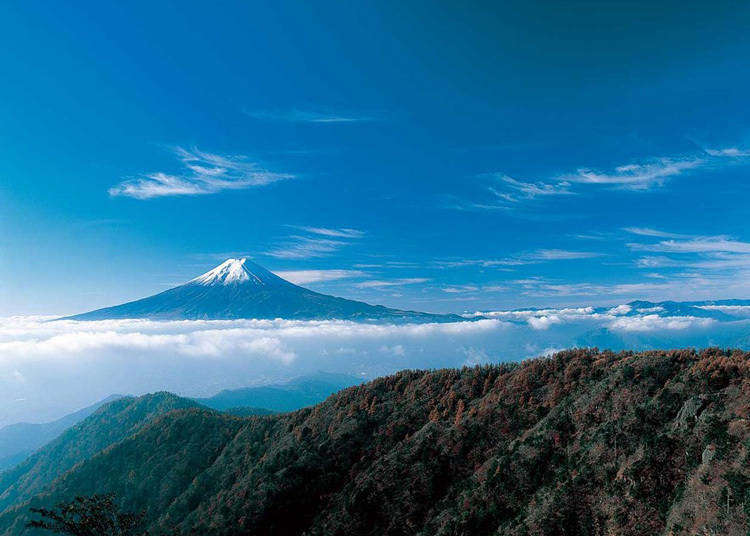
Top 10 Spots for Viewing Mt. Fuji at the Fuji Five Lakes Area
- Written by: Yuu Sato
Mt. Fuji, Japan's tallest mountain at 3,776 meters (about 12,388 feet), is not only a national icon but also a pinnacle of natural beauty. Its majestic presence offers some of Japan's most stunning vistas.
What makes Mt. Fuji uniquely captivating is how its appearance transforms based on your viewing angle. To help you experience these varying perspectives, we've compiled the top 10 viewing spots for Mt. Fuji, as recommended by local tourist associations. This guide will be invaluable for your visit to the Fuji Five Lakes area, ensuring you capture the mountain's beauty from the best vantage points.
- Table of Contents
-
- 1. Arakurayama Sengen Park: Best place for viewing Mt. Fuji and Chureito Pagoda together!
- 2. Oishi Park: Mt. Fuji with Lake Kawaguchi
- 3. Fujimoto Lake Biwa Resort: Mt. Fuji and the largest moss phlox garden in the Tokyo metropolitan area
- 4. Yamanakako Hananomiyako Park: Mt. Fuji surrounded by seasonal flowers
- 5. Oshino Village: Where Mt. Fuji is at its most beautiful
- 6. Roadside Station Fujiyoshida: People come all the way from the city to draw water here!
- 7. Tenjozan Park: Peering at Mt. Fuji from a lookout square
- 8. Nashigawa Maple Corridor: Mt. Fuji framed with autumn leaves
- 9. Mitsutogeyama: Getting in touch with your spiritual side
- 10. Mt. Fuji 5th Stage Okuniwa: A view so breathtaking, even a Tengu came for a visit!
1. Arakurayama Sengen Park: Best place for viewing Mt. Fuji and Chureito Pagoda together!
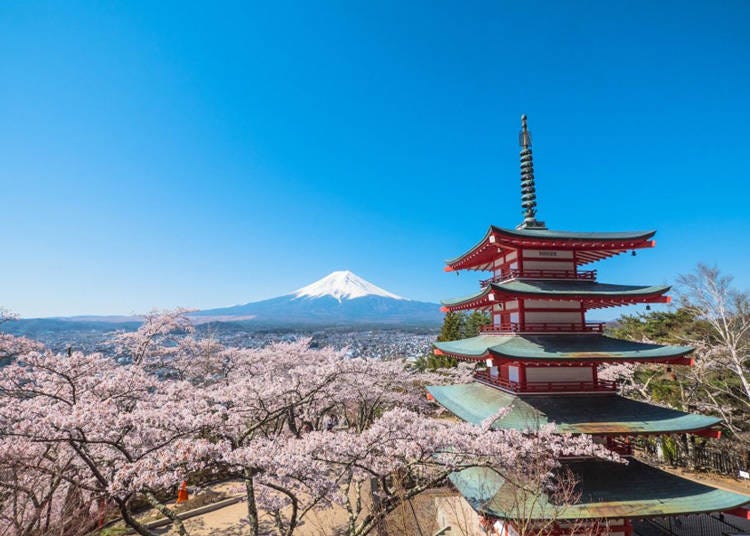
Arakurayama Sengen Park is located in Fujiyoshida City, and it comes highly recommended by many - especially foreigners - as a fabulous scenic viewpoint of Mt. Fuji. The reason for its popularity?
Because the beautiful five-story pagoda in the park, known as Chureito, can be seen together with the mountain! The pair is especially charming during the spring, when the sakura blossoms are in full bloom, a uniquely Japanese sight that's always great for Instagrammable shots.
Nearby, the Arakura Fuji Sengen Shrine has a torii (Japanese temple gate) that's also regarded as an excellent scenic viewpoint of Mt. Fuji. If you're going to be in the area, you can always check them both out and compare notes, or in this case, photos!
-
Arakurayama Sengen Park新倉山浅間公園
- Address 2-3353 Asama, Fujiyoshida City, Yamanashi Prefecture
2. Oishi Park: Mt. Fuji with Lake Kawaguchi
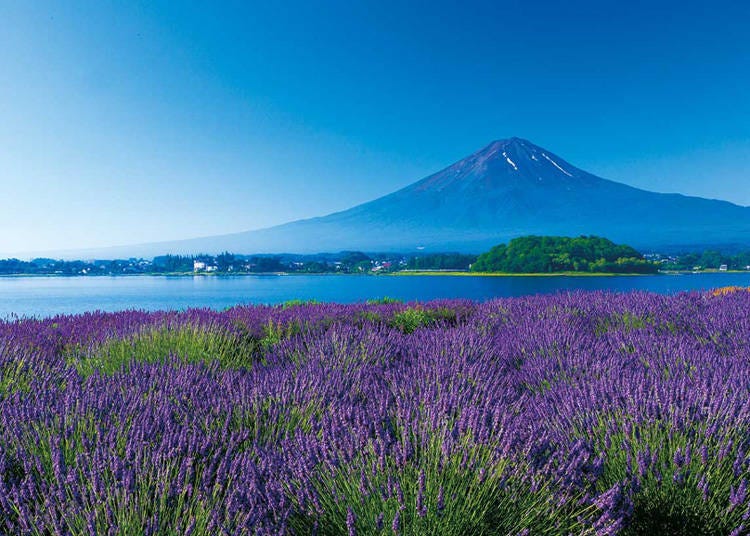
Another great spot to visit is Oishi Park, which offers a stunning view of both Mt. Fuji and Lake Kawaguchi at the same time. Additionally, the park is home to over 90 species of flowers that bloom along a 350-meter-long track. The view of Mt. Fuji can be enjoyed throughout the entire length of this floral path.
In June, the park holds a Herb Festival, which features a display of 100,000 lavender stalks. It's a breathtaking experience to see Mt. Fuji and Lake Kawaguchi from a distance while surrounded by fields of vibrant lavender. The park is also worth visiting in autumn when the red kochia leaves are in full bloom.
The Kawaguchiko Natural Living Center is located inside the park, where you can find various products made with fresh local ingredients from the Lake Kawaguchi area. Their homemade blueberry jam is particularly popular and definitely worth trying.
-
Oishi Park大石公園
- Address 2585-2 Oishi, Fujikawaguchiko-machi, Minamitsuru-gun, Yamanashi Prefecture
3. Fujimoto Lake Biwa Resort: Mt. Fuji and the largest moss phlox garden in the Tokyo metropolitan area
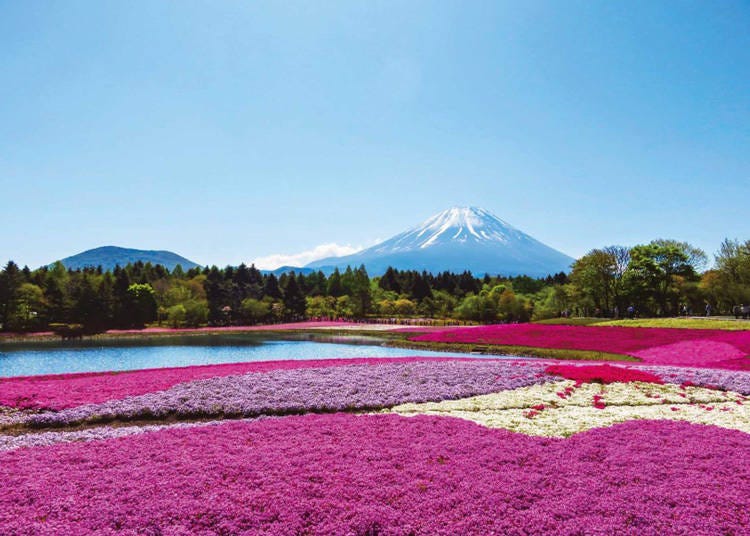
Every year, Fujimoto Lake Biwa Resort holds the Fuji Shibazakura Matsuri (Fuji Moss Phlox Festival) from April to the end of May. The highlight of this event is the roughly 800,000 moss phlox flowers blooming all over.
Their gorgeous pink petals stand in beautiful contrast against the looming Mt. Fuji in the background, and being able to see both together is why many travelers praise this place as a great Mt. Fuji viewing spot.
Even when it's not moss phlox season, the garden is always full of different kinds of flowers, such as anemone, forsythia, and azaleas, so there's never a plain sight to be found here, another reason for its popularity.
The resort is also one of the places where you can catch sight of a special phenomenon known as Diamond Fuji. This only occurs between early December and early January, when the sun seemingly settles on top of Mt. Fuji's peak for a brief instant. It is as if a large diamond is sparkling atop the summit.
When you watch this over a water surface, the reflected scenery makes it even more special, and some have named this particular sight the Double Diamond Fuji! Because this can only be seen at very few places, you may want to check beforehand where those places are if you're keen to see it with your own eyes!
-
Fujimoto Lake Biwa Resort富士本栖湖リゾート
- Address 212 Fujigamine, Fujikawaguchiko-machi, Minamitsuru-gun, Yamanashi Prefecture
4. Yamanakako Hananomiyako Park: Mt. Fuji surrounded by seasonal flowers
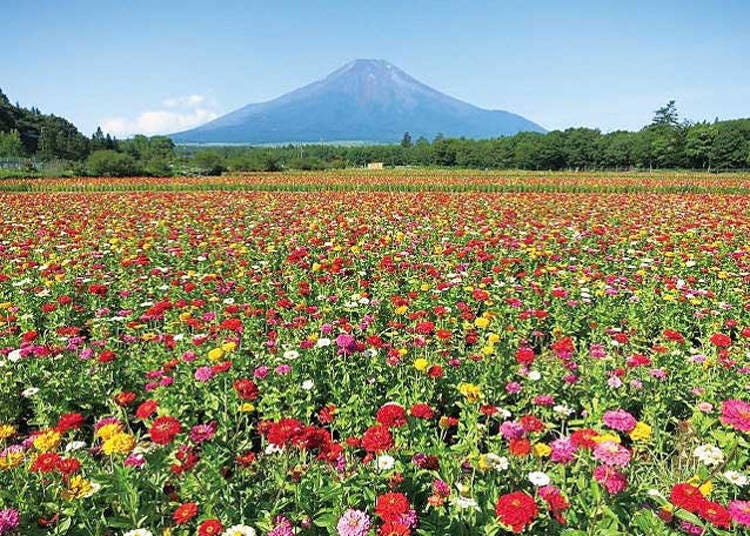
Hananomiyako Park, located beside Lake Yamanaka, is where you can admire Mt. Fuji being surrounded by 300,000 square meters (about 3.2 million square feet) of blooming seasonal flowers entirely free of charge!
There are tulips in spring, sunflowers in summer, cosmea in autumn, and so on - the types of flowers in the flower field and farm area will be updated as needed on the park's official website, along with information about their flowering season.
This makes it easy for travelers to plan their trips, so make full use of this provision! Besides the flower field and farm area, the park also has a theme park called Seiryu no Sato that has a soothing motif of flowers and water. There's certainly enough for you to see and do here for an entire day if you wish!
-
Yamanakako Hananomiyako Park山中湖「花の都公園」
- Address 1650 Yamanakako, Yamanakako Village, Minamitsuru-gun, Yamanashi Prefecture
5. Oshino Village: Where Mt. Fuji is at its most beautiful
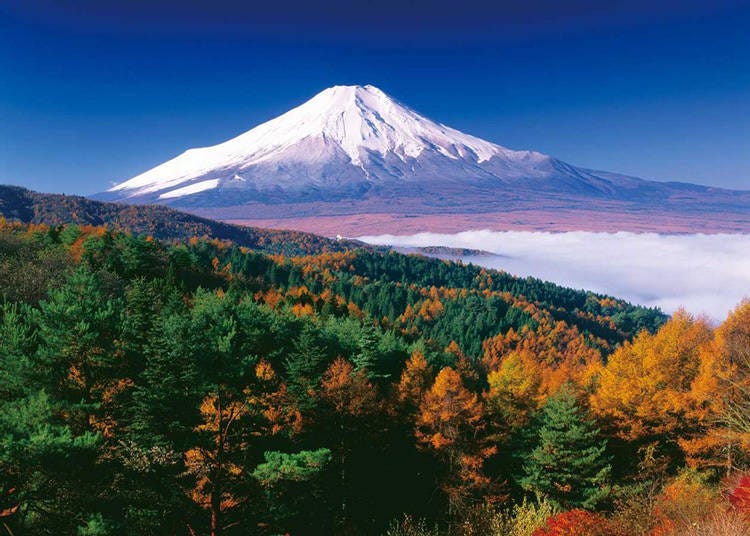
Located within the lush greenery of Yamanashi Prefecture's Minamitsuru District, Oshino Village is the place many people are convinced has the most beautiful view of Mt. Fuji.
As a result, visitors armed with camera equipment of all sorts flock to the village year after year to see and capture that precious sight for themselves.
There are quite a few points in the village you can drop by for these much-touted views: Oshino Park, Oshino Onsen area, Mobirabashi, Masunoie, and Omiyabashi, just to name a few.
Oshino Hakkai is a scenic viewpoint that is especially popular. The water source of this village is one of Mt. Fuji's subterranean rivers, and the names of the eight springs (which is what the word Hakkai literally means) connected to this source are Deguchi Pond, Okama Pond, Sokonuke Pond, Choshi Pond, Waku Pond, Nigori Pond, Kagami Pond, and Ayame Pond - all lovely places as well.
In fact, their combined beauty is why Oshino Hakkai is recognized as a national monument. It's definitely a place you should try to visit at least once!
-
Oshino Village忍野村
- Address Oshino Village, Minamitsuru-gun, Yamanashi Prefecture
6. Roadside Station Fujiyoshida: People come all the way from the city to draw water here!
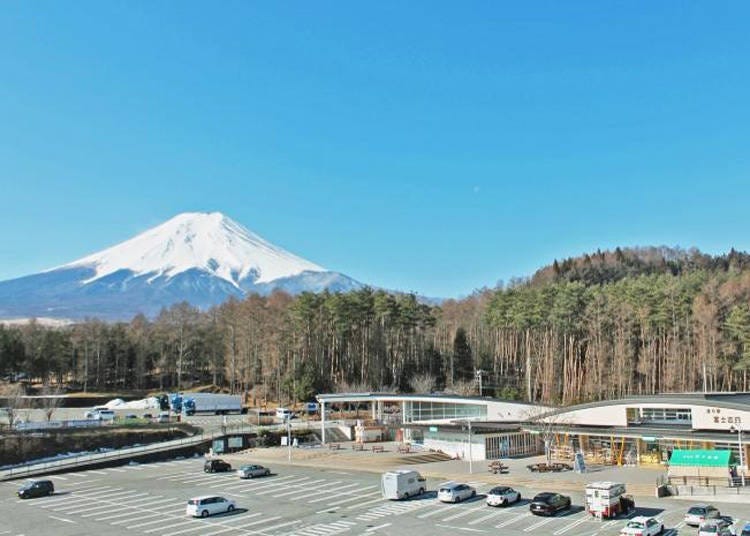
Roadside Station Fujiyoshida sits directly in the line of sight of Mt. Fuji and is quite possibly the roadside station in Japan with the most magnificent view of the mountain.
The fact is, many people who come here are not actually taking a rest stop - they drove here specifically to see the great view of Mt. Fuji it has to offer!
To get the full local experience, you can also buy fresh local vegetables here for cheap. Spring water from Mt. Fuji is available free of charge, and some food served by the eatery here can only be had in this rest stop - something else to look forward to when visiting!
Inside the Roadside Station, you'll find an observatory called Mt. Fuji Radar Dome Museum. This is where you can have a completely unobstructed view of the resplendent mountain.
The facility also houses a special experience room that simulates weather conditions on the peak of Mt. Fuji (-8C, or 17F with a wind speed of 13 meters, or 42 feet per second) that visitors can try out. This very educational activity is especially recommended for those traveling with family.
-
Roadside Station Fujiyoshida道の駅富士吉田
- Address 1936-6 Shinya, Fujiyoshida City, Yamanashi Prefecture
7. Tenjozan Park: Peering at Mt. Fuji from a lookout square
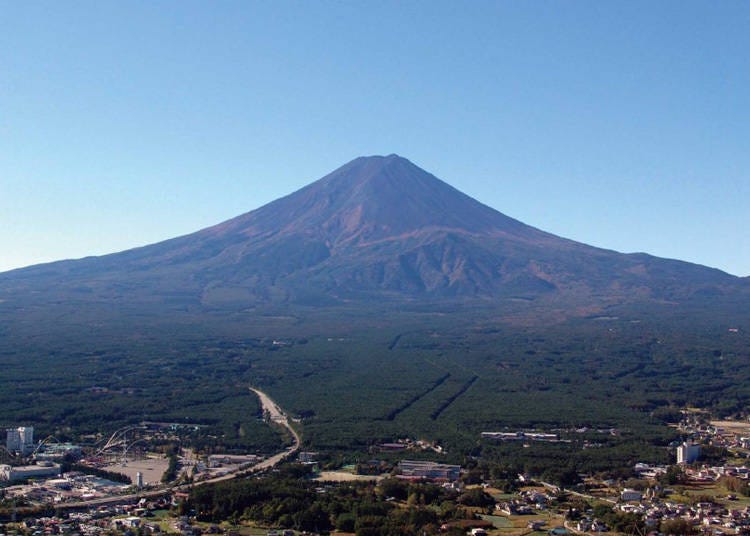
Tenjozan Park became a household name when famous Japanese fiction author Dazai Osamu used it as the setting of the folk story, Kachi-kachi Yama. Hop on the Mt. Fuji Panoramic Ropeway beside Lake Kawaguchi, and you'll be there in about three minutes.
Tenjozan Park faces Mt. Fuji and Lake Kawaguchiko directly, so the view is guaranteed to be astounding and very different from what the other scenic viewpoints offer.
The observatory deck at the ropeway is called Tanuki Chaya, and because light food and souvenirs are also being sold there, mountain climbers often use it as a halfway rest stop.
Along the way, you'll also find the Usagi Shrine, where the repository for a sacred rabbit is enshrined, and hikers and tourists come here to pray for safety and strong legs. The Tenjo Bell is another place of interest.
Because it faces Mt. Fuji, visitors can't help but ring the bell with great enthusiasm, filled with energy from the grand view before them. These are only a couple of the more popular spots that can be found in the area, and there's more to be explored when you visit in person!
-
Tenjozan Park天上山公園
- Address 1163-1 Asakawa, Fujikawaguchiko-machi, Minamitsuru-gun, Yamanashi Prefecture
8. Nashigawa Maple Corridor: Mt. Fuji framed with autumn leaves
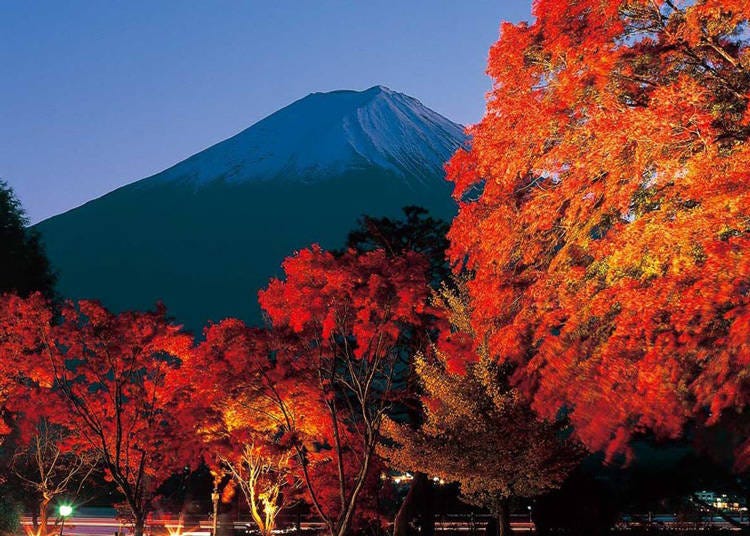
Another famous scenic viewpoint of Mt. Fuji near Lake Kawaguchi is the Nashigawa Maple Corridor, and as its name suggests, the maple leaves here are the main draw.
Every year around November, the roughly 60 large maple trees in the nature corridor start turning a fiery shade of red, creating a lovely landscape unique to the area.
Around this period of time, the Kawaguchiko Autumn Leaves Festival will be held, and the leaves will be illuminated at night, giving them a completely different look from the day!
It's difficult to see Mt. Fuji in the distance when night falls, so photographers may want to take advantage of the lighting from the illuminations during this time for the perfect shot.
-
Nashigawa Maple Corridor梨川もみじ回廊(河口湖もみじ回廊)
- Address Kawaguchiko, Fujikawaguchiko-machi, Minamitsuru-gun, Yamanashi Prefecture
9. Mitsutogeyama: Getting in touch with your spiritual side
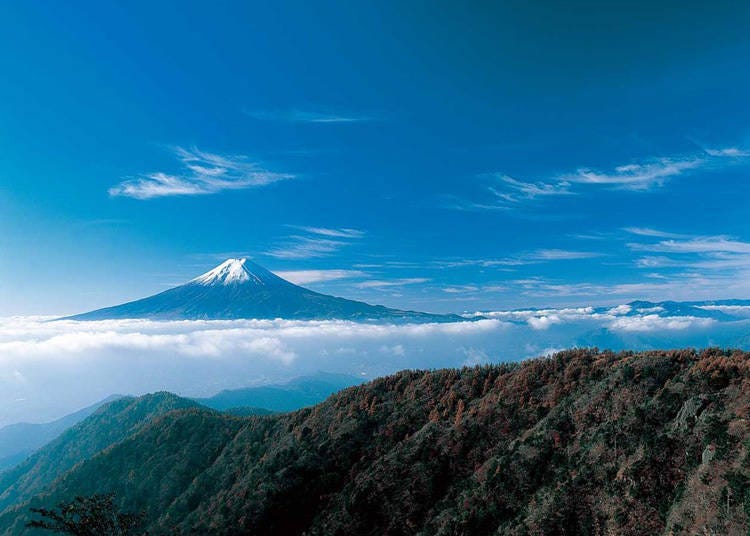
Mitsutogeyama is actually the collective name of three mountain peaks: Mt. Kaiun, Mt. Osutaka, and Mt. Kinashi, all sacred mountains with long histories of being connected to the faiths of many.
As such, it's an excellent place for people to go to get in touch with their spiritual side. On the other hand, for visitors wanting photographs, the view from the pavilion on the summit is especially sublime in the early morning.
It takes about 2.5 hours to get to the entrance of Mitsutogeyama from Shinjuku by special express train, so a day trip is very much within the realm of possibility!
-
Mitsutogeyama三ツ峠山
- Address Kawaguchi, Nishikatsura-cho, Minamitsuru-gun, Yamanashi Prefecture
10. Mt. Fuji 5th Stage Okuniwa: A view so breathtaking, even a Tengu came for a visit!
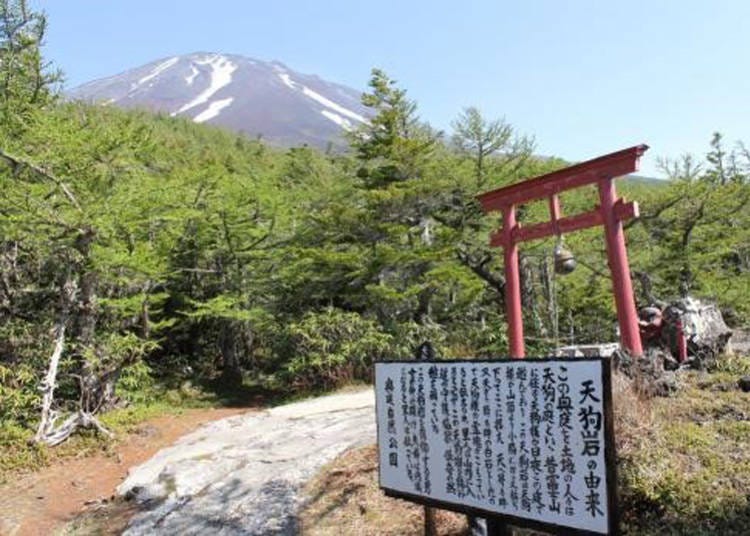
The recommended scenic viewpoint around the 5th stage of Mt. Fuji is called Okuniwa, or Tengu's Yard, taken from the legend that speaks of a Tengu (a legendary creature in Japanese folklore) visiting the place because of the magnificent view it offers.
There's a torii gate here dedicated to that Tengu, and it complements the natural landscape very well in pictures! The area here is quite flat, making the hiking route leading to Okuniwa easy enough for even beginner mountain climbers. Please give it a go and be rewarded with the ultimate photo opportunity at the end of your trek!
-
Mt. Fuji 5th Stage Okuniwa富士山五合目奥庭
- Address Narusawa Village, Minamitsuru-gun, Yamanashi Prefecture
We hope you've found this carefully selected list of 10 scenic Mt. Fuji viewpoints useful for your trip planning. Feel free to look them up on Instagram, Twitter, or other social media to verify the authenticity of this list for yourself!
You won't be disappointed by the pictures or discussions about these places you come across during your search. Perhaps you'll even start making plans for your own visit immediately after that, and really, there's no time like the present!
English translation by Huimin Pan.

Writer
Dali Corporation
A writer who focuses on intricate genres including human resources, legal affairs, and careers. He mainly writes column articles.
- Area
- Category
*Prices and options mentioned are subject to change.
*Unless stated otherwise, all prices include tax.
Recommended places for you
-

23 Quirky and Fun Things to Do in Akihabara
by: Himanshi Shah
-

A Don Quijote Like No Other: Step Inside the All-New Tourist-Friendly Store at Shinjuku Tonanguchi Bekkan (Open June 13)
by: Chehui Peh
-
Ad

Lapoppo Farm, one of Japan's leading makers of sweet potato treats! An in-depth guide to the secrets behind its popularity, including best-selling products and facilities!
-

Via Inn Prime Osaka Kyobashi Mizukinoyu: A Convenient Hotel Near Osaka Castle with Open-Air Baths and Nearby Sightseeing
by: Yotsuka Hizuki
-
Ad

Tokyo Comedy Bar: Where Jokes and Craft Beer Flow Freely
-

Ryuguden: Soak in Front of Mount Fuji At This Legendary Hakone Onsen (In-Depth Review)
by: Yoshika Izumi
Inspiration for Accommodations
-

Enjoy Mt. Fuji from the Comfort of Your Room! Recommended Ryokan with Mt. Fuji View
-

Stay Near the Cherry Blossoms! Hotels for Cherry Blossom Viewing in Tokyo
-

Family-Friendly Hotels with Free Shuttle to Disneyland: Convenient Access for a Magical Stay
-

Top Ranked Hakone Hotels with Mt. Fuji View: Enjoy Stunning Scenery from Your Private Space
-

Convenient Tokyo Hotels with Airport Shuttle: Ideal for Families and Heavy Luggage
-

Stunning Tokyo Tower View Hotels: Enjoy Spectacular Scenery from Your Private Space
-

Convenient Asakusa Hotels with Kitchens: Ideal for Extended Family Visits
-

Experience Luxury: Hakone's 10 Best Five-Star Accommodations
-

Enjoy Mt. Fuji Autumn Leaves! Top Hotels Near the Popular Autumn Leaves Corridor
-

Experience Hakone Fall Foliage from Your Room with Stunning Views
-

Numazuko Kaisho in Ueno: Good Quality, All-You-Can-Eat Seafood for Just US$12!?
-

Day Hiking Near Tokyo: 6 Easy Hikes You Can Do While Visiting Japan
-

Tokyo Train Map: Your Essential Guide to Subways and Railways
-

Tokyo Station Top 10 Sweets Ranking!
-

Explore, Eat, Relax - Welcome to the World of Onsen Gastronomy! Travel Japan's countryside, expand your culinary horizons, and soak in sumptuous hot springs
-

JR Edition: Visit all of Tokyo in one Day with the Tokyo Metropolitan District Pass!
- #best ramen tokyo
- #what to buy in ameyoko
- #what to bring to japan
- #new years in tokyo
- #best izakaya shinjuku
- #things to do tokyo
- #japanese nail trends
- #what to do in odaiba
- #onsen tattoo friendly tokyo
- #daiso
- #best sushi ginza
- #japanese convenience store snacks
- #best yakiniku shibuya
- #japanese fashion culture
- #best japanese soft drinks



















